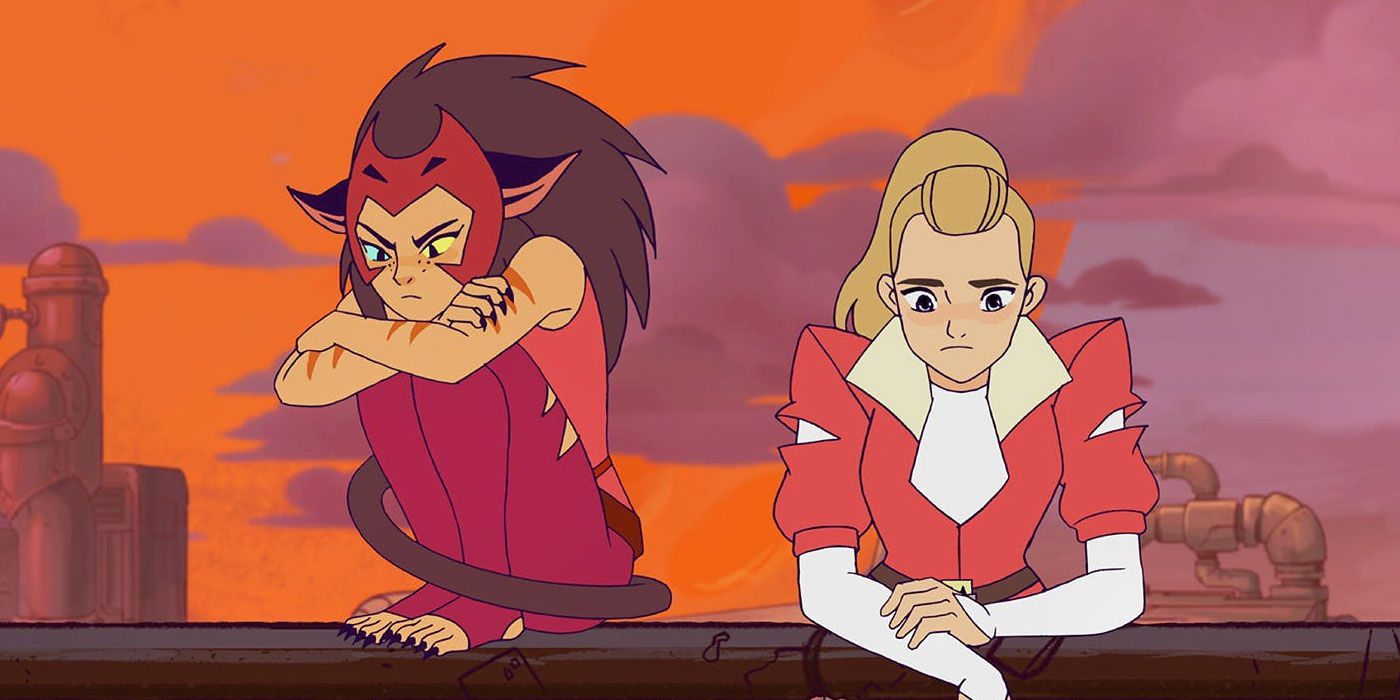Fans of the original She-Ra: Princess of Power will no doubt remember one of the Princess of Power's biggest rivals was Catra, the Horde soldier with the power to transform into a panther with the use of a magic mask stolen from the Queen of the Magicats. In the pilot, Adora was her Force Captain before defecting to the rebellion, and the two remained enemies for the remainder of the series.
Netflix's new She-Re and the Princesses of Power series sees a similar origin story for Adora and Catra in so far as they're both in Force Training in the Fright Zone with other members of the Horde when the series starts. Adora discovers the Sword of Protection in the Enchanted Forest after leaving the Fright Zone, meets Glimmer and Bow and eventually joins the Rebellion when she sees what the Horde is really up to on Etheria. Sure, He-Man's been eliminated from the equation, but the bones of the story are pretty much unchanged -- except for one key aspect, that is: Adora's relationship with Catra.
RELATED: She-Ra Trailer Introduces Hordak, Princesses of Power and a New Origin
Instead of the two going from essentially co-workers to enemies, Noelle Stevenson's story introduces them as best friends raised in the Horde together, and probably the only real family either has ever known. This makes Adora's eventual change in loyalty especially resonant considering she's leaving behind real relationships that were based on truth, even if her upbringing was based on a lie. According to Stevenson, their friendship serves as a foundation for both of their journeys as the show moves forward which is a drastic change from the 80s cartoon:
"That was one of the first things that I knew about my version of the show," Stevenson told the press at New York Comic Con. "One that it was something that the executive I was developing it with she said, "You know I always kinda thought that Adora and Catra should know each other. They would've grown up together, why did they never have any kind of connection?" And I was like, "I love that!" It's also just a relationship that I really gravitate toward. The sort of like people who are inseparable who shape each other so much and then the moment that they're sort of removed from that, where they grow past each other... Adora and Catra, they're so co-dependent at the beginning of the show. So much of Adora's journey to being a hero and Catra's journey to being a villain... it's them having to figure out who they are outside of that relationships with each other.
"It's so fraught, it's so tragic in so many ways especially Catra. She takes it really, really personally," Stevenson continued. "For Catra its personal, for Adora it's ideological. She's like, 'I need to do the thing that's right, even if I leave behind this person who is so important to me.' And Catra's like, 'How could you do that? What could possibly be more important than the relationship we have?' And so that's just always been a relationship dynamic that I've really gravitated towards, and I really wanted to showcase the complexity of it here."
RELATED: She-Ra Reboot Will Include Some Level of LGBTQ Representation
The relationship between Adora and Catra marks just one more way Stevenson has updated the original property to reflect the way storytelling has evolved in the 30 years since She-Ra: Princess of Power aired. The characters' images have been changed to exhibit more diversity and body positivity, the character of Bow has been tweaked to have two fathers in an effort to represent the LGBTQ community, and now Catra and She-Ra have a relationship that deepens their adversity rather than just being two women who once competed for the attention of the same father figure and whose lives still revolve around him, albeit in different orbits. Stevenson's proven herself more than capable of creating something new, but familiar from the bones of something old.
The entire first season of She-Ra: Princesses of Power premiers on Netflix on November 16.

